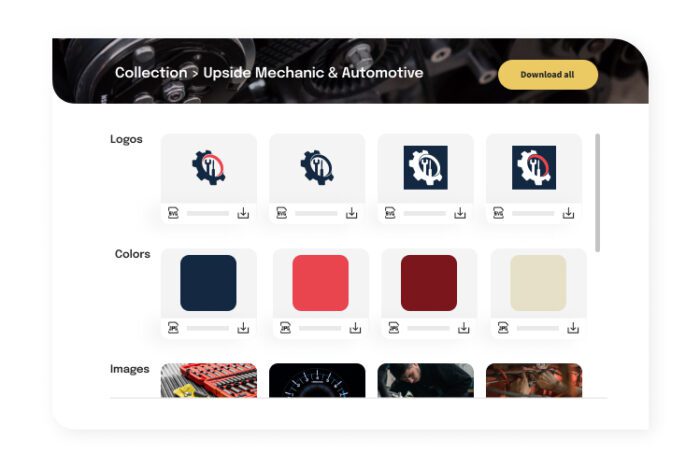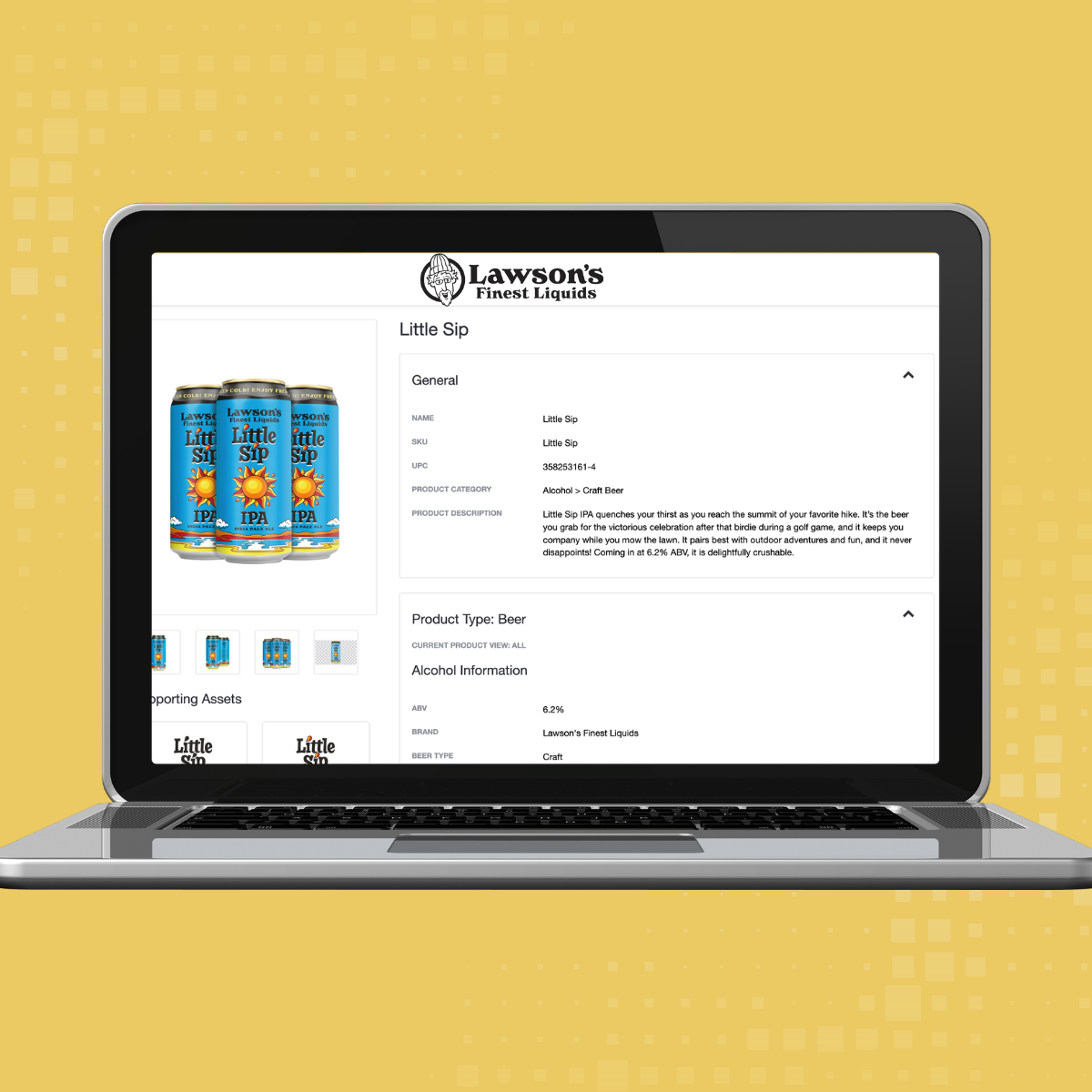Acronyms 101: Essential Definitions for Tech and Marketing


The tech and business worlds absolutely love acronyms. If there are multiple words in a common phrase it’s almost a guarantee that it’s going to get shortened into a pesky abbreviation sooner or later. Whether you are a seasoned digital marketing expert or just stepping into the world of technology and marketing, the common jargon is always evolving and it can be hard to keep up. More than once I have felt as though I was getting buried under a wave of abbreviations during a meeting; effectively losing the trajectory of the conversation while hurriedly googling, what does BoFu stand for? Because of that experience we’ve compiled a list of common acronyms that show up in common situations related to business, tech, and marketing.
API: Application Programming Interface
An application programming interface allows a company to open up their application's data and functionality to third-party developers, business partners, and departments within their own companies. Essentially, API allows two applications to talk to each other and benefit from one another's data and functionality. Searching for flights online is one use of API. A website like Expedia uses an airline website's API to access information like flight times, seats, and baggage options. The airline's API relays all of this data back and forth between the two websites to show you the correct information.
ABM: Account Based Marketing
Account based marketing is a focused approach to marketing for B2B businesses. The marketing and sales teams collaborate to identity and turn "best fit" accounts into customers. This consists of personalizing marketing efforts to appeal to the specific needs of a potential client.
B2B: Business to Business
Companies that sell their goods or services directly to other companies. B2B business examples include Slack, Amazon Business, or places where business services are offered, like a marketing agency. Many companies have elements of both B2C and B2B.
B2C: Business to Consumer
Companies that sell directly to consumers. Examples of B2C tend to be more recognizable than B2B since they’re advertised directly to the consumer. Within B2C companies there are five distinct types. The first is direct sellers like Microsoft who only sell their own products. Second, online intermediaries don’t own the products sold on their site but work to put companies in contact with buyers. One example is Amazon. Next, advertising-based B2C businesses purchase ad space on popular websites to place their ads, a popular example is the Huffington Post. Fourth, community-based B2C are companies that use like-minded media spaces to identify promising leads easily. Finally, there are fee-based B2C companies that require payment for anyone to access their content. Netflix and Hulu are two examples. All that being said, many companies have elements of both B2C and B2B.
BoFU: Bottom of Funnel
The funnel system is a simplified way of describing the “customer journey”. The bottom of funnel content applies to the “decision stage” or content that is working to persuade a customer to choose your brand as a solution. Related steps are MoFU and ToFU. Check out this page if you’re looking for more detailed information on how these steps can help out your SEO.
BR: Bounce Rate
Bounce rate can refer to a few different things. Typically, it means the percentage of people who land on a web page and then leave without interacting with anything else on the site. A high bounce rate tends to indicate low conversion rates because individuals aren’t staying long enough to read content or visit other site pages.
Bounce rate can also refer to emails. A high email bounce rate refers to the rate at which emails are unable to be delivered. A high bounce rate could indicate out-of-date email lists or many invalid addresses.
CAC: Customer Acquisition Cost
The customer acquisition cost is just as it sounds, what it costs to acquire a customer in terms of dollars and cents. It seems like it would be tricky to calculate but luckily there’s a simple way to come up with a figure.
- Add up sales and marketing costs for your determined time period. Salaries, bonuses, advertising and program expenditures, etc fall into this category.
- Divide this figure by the number of new customers acquired during that time.
That means if $250,000 was spent on Sales and Marketing in a quarter and 20 customers were added during that time then the CAC is $12,500. Some companies have more sophisticated analyses and can look at CAC by individual marketing programs or channels or even by a specific ad campaign. For B2B companies selling to the enterprise, a few dollars here and there won’t make an impact in CAC, but for an eCommerce brand, a few dollars in CAC can have a huge impact. CAC is also referred to as CoCA or cost of customer acquisition.
CMS: Content Management System
A content management system allows users to create and manage a website without necessarily knowing how to code the website from scratch, in many cases knowledge of how to code isn’t required at all. Programs like WordPress, Wix. and Squarespace are all examples of content management systems. Interested in the difference between DAM and CMS? Check out our blog post that highlights the differences.
COS: Content Optimization System
A content optimization system is a software platform that focuses on optimizing content to deliver a fully personalized web experience to customers. Although, it’s not uncommon to see COS used it is primarily a term utilized by Hubspot to describe their own system.
CPA: Cost Per Acquisition
Cost-per-acquisition, also known as cost-per-action, is focused on what someone does after they click on an ad. While CPC focuses on the initial click, CPA is all about if the prospect visits other web pages, watches a video, fills out a form, or purchases the product. There is no one-size-fits-all for what an “acquisition” means. For some companies, it means getting someone to make a purchase, for others it is getting someone to sign up for a brand’s emails.
CPC: Cost Per Click
Cost-per-click refers to a metric used to describe the performance of a pay-per-click advertising campaign. Simply, it’s the amount of money spent to gain a click on a digital advertisement. It’s simple to figure out the cost-per-click figure. If $200 is spent on the advertising campaign and clicks associated with this campaign are 20, this would make the cost-per-click $10.
CPG: Consumer Packaged Good
Consumer packaged goods are any items that are used frequently by the average consumer; typically sold quickly and replaced often. Household cleaning products, beverages, makeup, and packaged foods are all examples of a CPG.
CR: Conversion Rate
Generally, this refers to the percentage of individuals who complete a specified action on a web page. This might be filling out a form or interacting with a customer service portal. Although dependent on industry and type of page, pages with high conversion rates tend to be performing well while low conversion rates are usually performing poorly.
CRM: Customer Relationship Management
Customer relationship management is a technology sector designed to manage all of your company relationships, customer communications, and interactions, and sometimes a place to collect potential customers. Popular CRM software includes HubSpot and Dynamics.
CRO: Conversion Rate Optimization
The goal of CRO is to improve your website in order to increase the number of users who are performing a desired action on the site. The ultimate goal is to convert site visitors into customers. A few years ago, conversion rate optimization used to be one of many (too many!) skills a digital marketer was expected to have. Today, CRO is a growing specialization with dedicated training programs and people using CRO as a title. And now we get even more confusing with the acronyms… CRO can also mean Chief Revenue Officer.
CRO: Chief Revenue Officer
The chief revenue officer holds responsibility for every activity that generates revenue. The chief revenue officer should work to connect all the revenue-generating activities and groups in an organization; marketing to sales, customer success, pricing, and revenue operations.
CTA: Call To Action
A prompt on a website or social post that tells the users to take a specific action. It could be clicking a link, button, or image, watching a video, or filling out a form to name a few options. CTA’s help encourages potential customers to interact, learn more, and get connected to the sales team.
CTR: Click-Through-Rate
The CTR is a way to measure the percentage of impressions which resulted in a click. This is typically in regards to a PPC. Generally, if you have a high CTR, individuals find your ad to be relevant while a low CTR probably means individuals find your ad to be less relevant. It is all good to know that Google heavily weighs relevance, a less relevant ad will be shown far less than a more relevant one.
CXM: Customer Experience Management
CXM, also known as CEM, is a system of strategies and technologies that are intended to improve customer engagement, satisfaction, and experience.
Digital Asset:
In business, an asset is something of value that is owned by a company. Property, equipment, buildings, the list goes on. In the digital workspace, images, PDFs, videos, text, design files, presentations, and audio files are all examples of digital assets. In a similar way to how companies can have physical assets companies can have digital assets too. In short, digital assets are any type of digital file that is valuable to an organization. Cryptocurrencies also fall under the umbrella of digital assets. This realm of digital assets is obviously managed quite differently than the marketing and creative-related kinds. If you’re looking for a more comprehensive explanation of digital assets check out our blog post.
DAM: Digital Asset Management
Quickly, companies can accrue tremendous numbers of digital assets in varying forms. To make the most of these assets, the ability to organize and share them efficiently is critical. Digital Asset Management software is designed to help companies manage their digital assets in a way that allows them to make the most of what they have. We have been a leader in digital asset management since the beginning, recently we expanded into marketing delivery, a new take on DAM practices. To learn more about marketing delivery visit our website.
ECM: Enterprise Content Management
Enterprise content management is the management of all systems that have to do with the business-related content of a company. The type of content stored in these systems includes documents, contracts, invoices, receipts, pdfs, and word files to name a few. To learn more about the difference between DAM and ECM check out our blog post.
GA: Google Analytics
Google Analytics is a measurement service provided by Google to generate details about a website’s visitors, traffic sources, conversion rates, and sales. It can be a valuable tool for marketing teams to measure and understand their website visitors.
GRP: Gross Rating Point
In short, GRP is a measurement of advertising effectiveness across media channels. To measure GRP numerically you can calculate it as a percent of the target market reached multiplied by the exposure frequency. For example, if you get advertising to reach 20% of the target market, and give them 4 exposures, you would have an 80 GRP.
IBL: Inbound Link
An inbound link, also known as a backlink, is a link connecting back to your site from a separate webpage. Similar to the OBL, but in reverse.
IP Address: Internet Protocol Address
An IP address is a unique numerical label that identifies each device on the internet or a network. “IP” refers to an internet protocol which is a set of rules that format data sent via the internet or network.
ISP: Internet Service Provider
A company or organization that provides internet services.
KPI: Key Performance Indicator
KPI is a way to reference a performance measurement to show how well a company or individual is meeting specified goals, such as website traffic or sales.
LTV: Lifetime Value
Lifetime value refers to the estimated net profit of a future customer over the entire span of the relationship. It’s simple to calculate the LTV in a few steps.
- Use the revenue the customer paid you during your relationship.
- Subtract the gross margin from the revenue.
- Divide the estimated cancellation rate for that customer.
So, if your customer pays $100,000 per year where your gross margin on the revenue is 75% and the customer is predicted to cancel at 15% per year, then the customer's LTV is $500,000. It is important to note that gross margins vary wildly by sector. For CPG and apparel companies the margin can be relatively low. That’s because there is a cost of goods sold on every transaction. Meanwhile, margins for software companies, particularly those in the SaaS field, can be extremely high since once the system is built where even if millions of customers are utilizing it, it doesn’t significantly increase costs.
MAM: Media Asset Management
Media asset management refers to software that operates like a DAM but caters specifically to media like photos and videos and oftentimes includes special tools made for video production or photo editing. The term used to be more common as DAM platforms were once more limited in what kinds of files they could handle. To learn more visit our blog post on the difference between DAM and MAM.
MoFU: Middle of Funnel
The funnel system is a simplified way of describing the “customer journey”. The middle of funnel content applies to the “consideration” stage. Your target audience has identified the issue and is searching for a solution to their problem. Related steps are MoFU and ToFU. Check out this page if you’re looking for more detailed information on how these steps can help out your SEO.
MQL: Marketing Qualified Leads
A marketing qualified lead is someone who has demonstrated interest in a brand and stands out as someone who is more likely to become a customer compared to other individuals. Actions that might demonstrate interest could be filling out information forms on your website or following and interacting with social media channels.
MRR: Monthly Recurring Revenue
This refers to how much a subscription-based business brings in each month. MRR is gained from new customers and subscription upsells, while MRR is lost due to cancellations (customer churn) or downgrades. This is one of the key performance indicators for almost every software as a service company.
NFS: Network File System
A Network File System allows remote computers to access files on a network. All people within the network have the ability to view, store, and update files on any external device as if they were stored locally (on the computer itself). An NFS makes file-sharing efforts with many people easier.
OBL: Outbound Links
This is a link from your website to another. Similar to an IBL, but reverse.
OKR: Objectives and Key Results
Just as it sounds OKR is a strategy to identify the most important objectives and key results to keep a team on track.
PIM: Product Information Management
Along the same lines as digital asset management (DAM), product information management is an application designed to aid businesses in collecting and managing product information. Product information includes detailed information like sizes and colors for CPG items to more general descriptions and assets. PIM platforms often serve as a channel to distribute information to sales and eCommerce platforms as well. Image Relay has been working hard to develop a product information management platform that fulfills the needs of our partners. With our recent expansion into marketing delivery, this platform is now available and ready to use. Visit Image Relay to learn more.
PPC: Pay Per Click
Pay-per-click refers to when an advertiser pays the ad publishers (usually a search engine, social media channel, or specific website owner) each time their ad is clicked on. Google search ads, Facebook ads and sponsored Instagram posts can all be PPC. If the ad is hosted on a social media platform or specific website it will often be there for most users. If it is published by a search engine the advertiser will provide keywords that are linked to the ad topic and if someone searches for those words the ad will be displayed.
PXM: Product Experience Management
Product experience management is similar to PIM but with a more directed focus on providing a great customer experience rather than distributing customer information. For reference, CXM is a consumer's perspective on a brand determined by various factors and is intended to create a customer-brand link; PXM could be considered one of those factors. So while CXM is focused on the customer-brand relationship, PXM is product-data focused and is intended to create customer-product links. Product experience management is closely linked to the overall goal of PIM but with a more directed focus on providing a great customer experience rather than distributing customer information.
ROI: Return on Investment
Return on investment is a common way to evaluate the effectiveness of an investment. ROI is important to keep track of to make sure your budget is being spent wisely and efficiently. To calculate ROI;
- Take the numerical gain from an investment.
- Subtract the cost of investment.
- Divide by the cost of investment.
The resulting figure will be expressed as a percentage.
RSS: Rich Site Summary
A rich site summary is a way of allowing internet users to get quick access to a feed of updates, such as new blogs, articles, or podcasts. Publishers syndicate the content and it gets pushed out through this unique web protocol. If you’re getting an email whenever a new blog is published from a company or person you follow, that’s an RSS feed generating that email.
SaaS: Software as a Service
Software as a Service, or SaaS, is a method of delivering applications over the internet. As opposed to downloading and maintaining software, the program can be accessed through the internet eliminating the need for updates and maintenance. Many new software companies offer their products as SaaS rather than making customers take on the associated costs of hosting and maintenance. SaaS is also referred to as on-demand software, hosted software, or web-based software. We know a thing or two about SaaS since Image Relay falls into this category.
SEM: Search Engine Marketing
Search engine marketing is a marketing strategy intended to increase the visibility of a website on search engine result pages like Google or Bing. Although similar to SEO, the primary difference is the use of paid advertising in SEM versus utilizing strategies to promote organic website traffic in SEO. Search results of SEM may appear to a web user as an advertisement rather than just a result in a search engine.
SEO: Search Engine Optimization
Search engine optimization is a marketing strategy intended to increase the visibility of a website in search engine results. SEO is similar to SEM, the primary difference being that SEO works to gain organic search results rather than SEM which uses paid advertising. SEO not only includes content and how relevant it is to a search but it also includes things like site structure, backlinks, and domain authority.
SLA: Service Level Agreement
A service level agreement clarifies expectations between the service provider and customer. It should describe the products or services to be provided, a contact point for user issues, the metrics by which the process will be monitored, and if any, remedies or penalties that should become necessary if the end product isn’t delivered.
SWOT: Strengths, Weaknesses, Opportunities, Threats
A SWOT analysis is a method for a company to analyze its strengths, weaknesses, opportunities, and threats. Strengths and weaknesses apply to internal operations and opportunities and weaknesses are externally focused. The goal of a SWOT analysis is to identify the most important areas of focus to develop a focused plan for a department or entire organization.
ToFU: Top of Funnel
The funnel system is a simplified way of describing the “customer journey”. The top of funnel content applies to the “awareness” stage. At this point, your target audience is unaware of your company and you are seeking to gain awareness. Related steps are MoFU and BoFU. Check out this page if you’re looking for more detailed information on how these steps can help out your SEO.
UI: User Interface
The user interface is the user-facing side of a website or software program. A good user interface is easy to understand and efficient to use. Features like a toolbar, buttons, drop-down menu and page design are all part of the user interface.
VAM: Visual Asset Management
Although VAM is similar sounding to acronyms like DAM and PIM, the way assets are stored and displayed is totally different. VAM focuses on onsite scene documentation using 360° photography. All the images taken from this process can be linked together into a virtual tour of a place. These virtual tours can be used for everything from safety training in a manufacturing facility to maintenance instructions for equipment.
WCM: Web Content Management
Web content management systems are used to create, manage, and publish websites. Overall, the general purpose of WCMs are similar to CMSs but WCMs are a more in-depth and adaptable version of the website building software. To learn about the detailed differences between CMS and WCM check out this page. More interested in the difference between DAM and WCM? Follow the link to our blog post on the topic.



